Back when I collected Texas highway maps, the presence of Shreveport – not in Texas, but close enough that it was depicted on those maps – made me wonder, why is there a city there? How could it be a port so far inland? Why don’t you ever hear much about it?
Those answers weren’t easy to look up in those days. Years passed, and I passed through Shreveport on I-20 a number of times, but never stopped. This time, approaching from the south on U.S. 171, I decided that we would, even if only for a short visit. Some things considered, short might be best.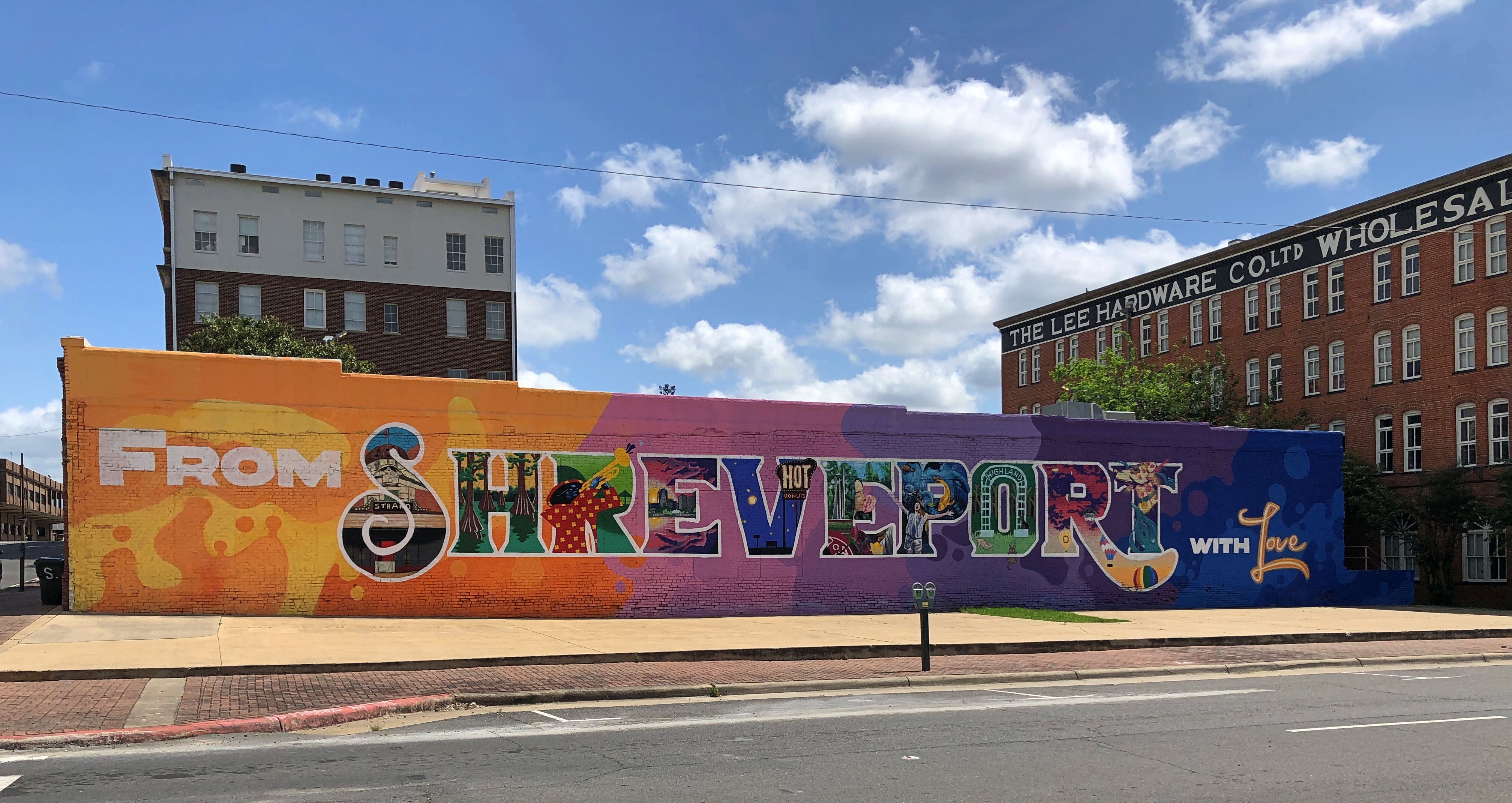
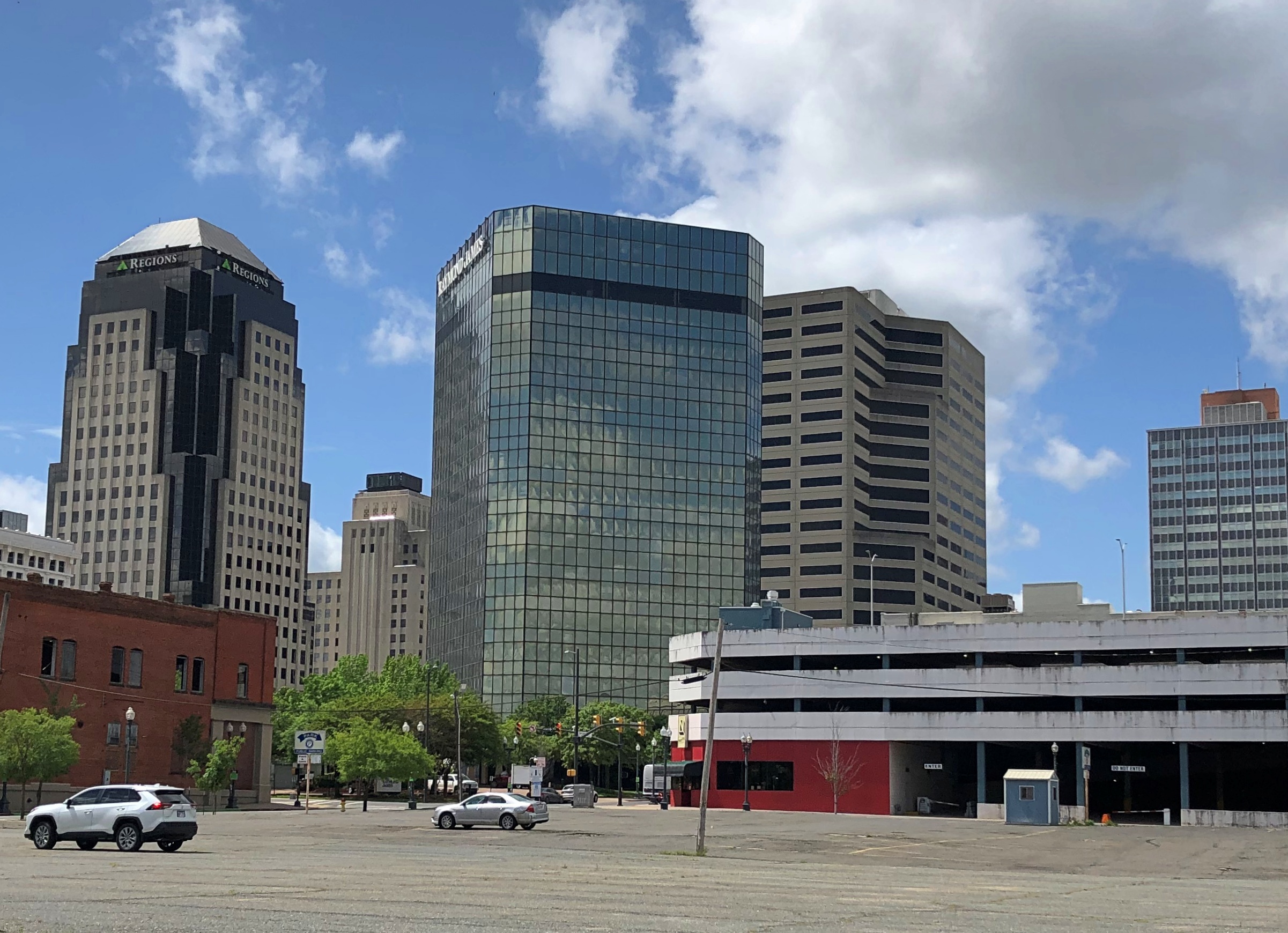
I looked into the origin of the city. The generally forgotten but incredibly remarkable Henry Miller Shreve, though not the founder himself, made the town possible. “A giant among America’s rivermen,” says the National Mississippi River Museum & Aquarium in Dubuque.
“In 1826 Shreve accepted the post of Superintendent of Western River Improvements. He began by designing a double-hulled boat with steam power operating a windlass to yank snags from the river. The first snag boat, the Heliopolis, was an immediate success, and in 1832, Shreve was ordered by the Secretary of War to clear the ‘Great Raft’ of rotten logs, trees, and debris estimated to be 150 miles long, out of the Red River. Shreve had to battle short funds but by 1839 the Red was clear and Shreve’s fame was insured.”
As it happened, the future site of Shreveport was where the the Texas Trail, a route into Texas, met the now-navigable Red River. The Shreve Town Co. founded Shreve Town in 1836.
Sunday, April 14, proved to be quite warm in Shreveport. Downtown was almost empty, and I have to wonder whether there’s much more activity on a weekday. At some point in the city’s recent history, Shreveport and Bossier City decided that casinos would be just the thing to juice up the downtown economy, or at least draw Texans to its gaming destinations.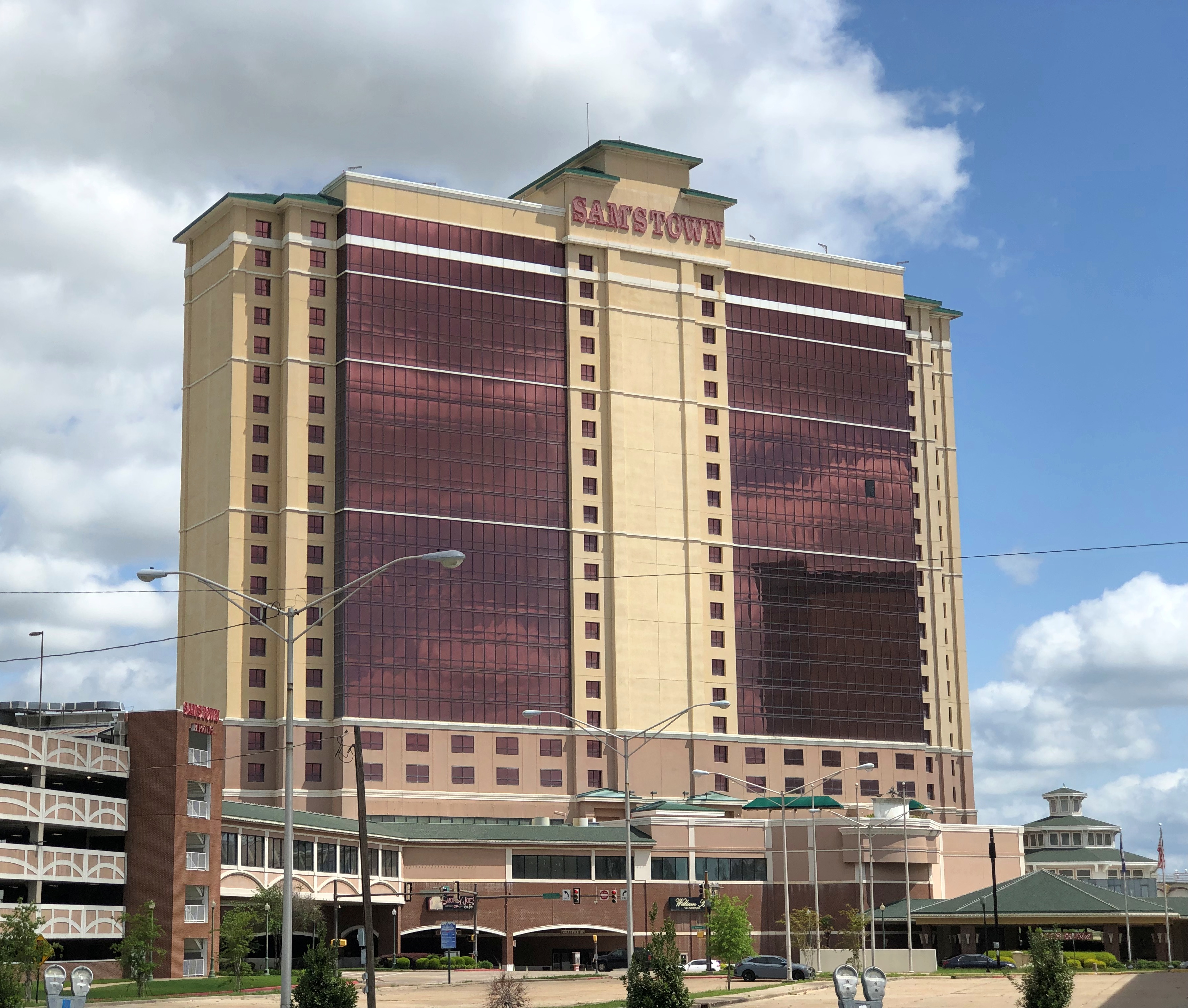
Besides Sam’s, nearby casinos include Bally’s, Margaritaville Resort Casino, Horseshoe Bossier City (Caesars) and Boomtown Casino Hotel. There’s also a spot of adult entertainment in the neighborhood. 
I didn’t know Mr. Flynt was still around. He isn’t, having died a few years ago. But the brand clearly lives on.
One of the bridges crossing the Red at Shreveport carries Texas Street.
The underpass, near the riverfront, is a pleasant place to stroll. Not a bad example of placemaking. A number of restaurants and bars line the way, which is part of what the city calls the Red River District. Artwork graces the district, such as this mosaic. Shreveport does have an extensive musical history, including Elvis singing about doughnuts.

The bridge columns aren’t unadorned either.

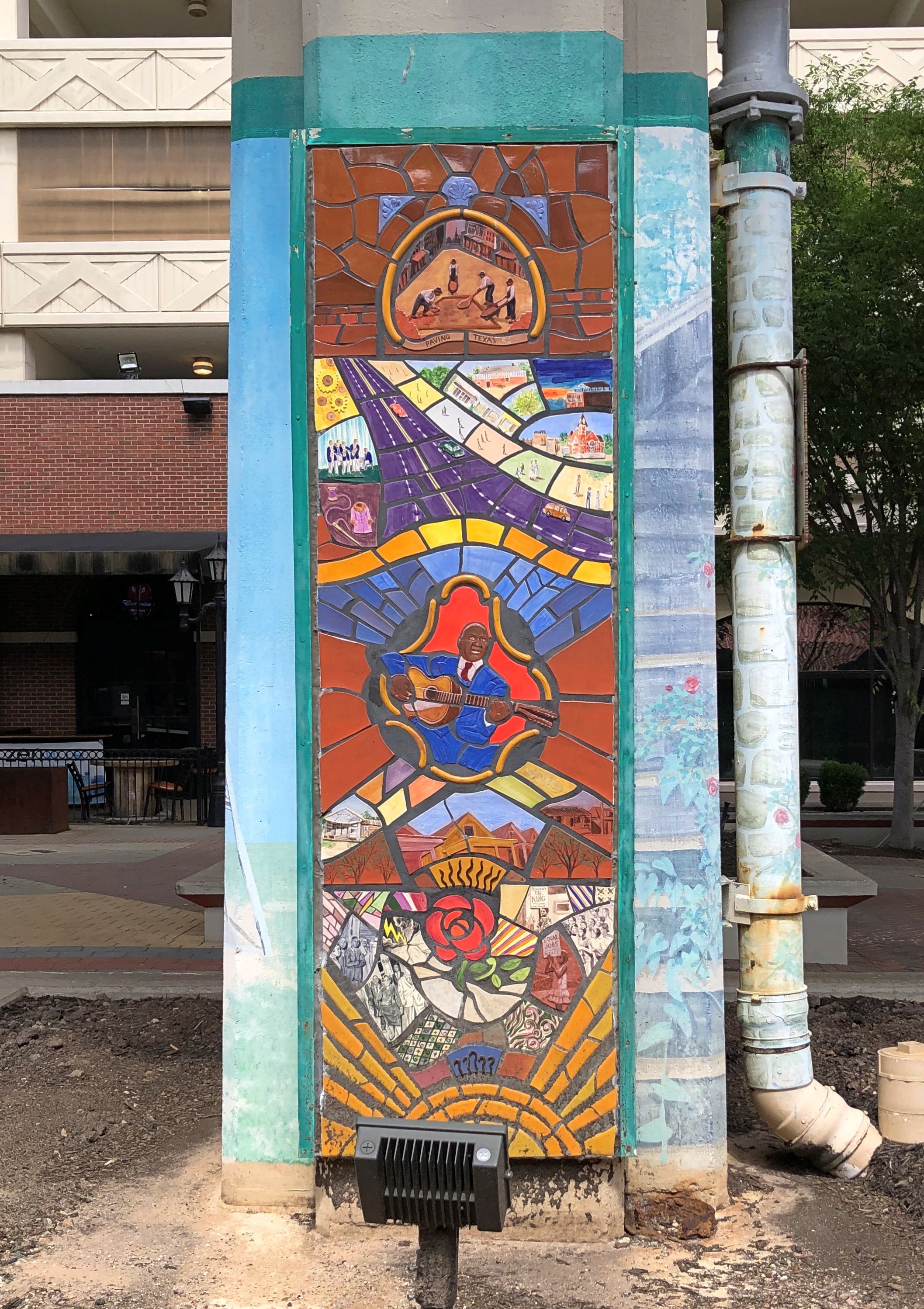
Formally the underpass is called Louisiana Purchase Plaza, though I wonder whether anyone calls it that. In any case, Downtown Shreveport says that the work on the columns “focuses on the distinct cultures that helped to define Northwest Louisiana — African American, Indian, French, Spanish and Cajun; the three contributing artists for the columns came from Baton Rouge, New Orleans and Shreveport.”
Footprints also mark the walkway. I assume these are impressions made by famed – Sheveportians? Shreveportoids? Shreveporters, Wiki asserts.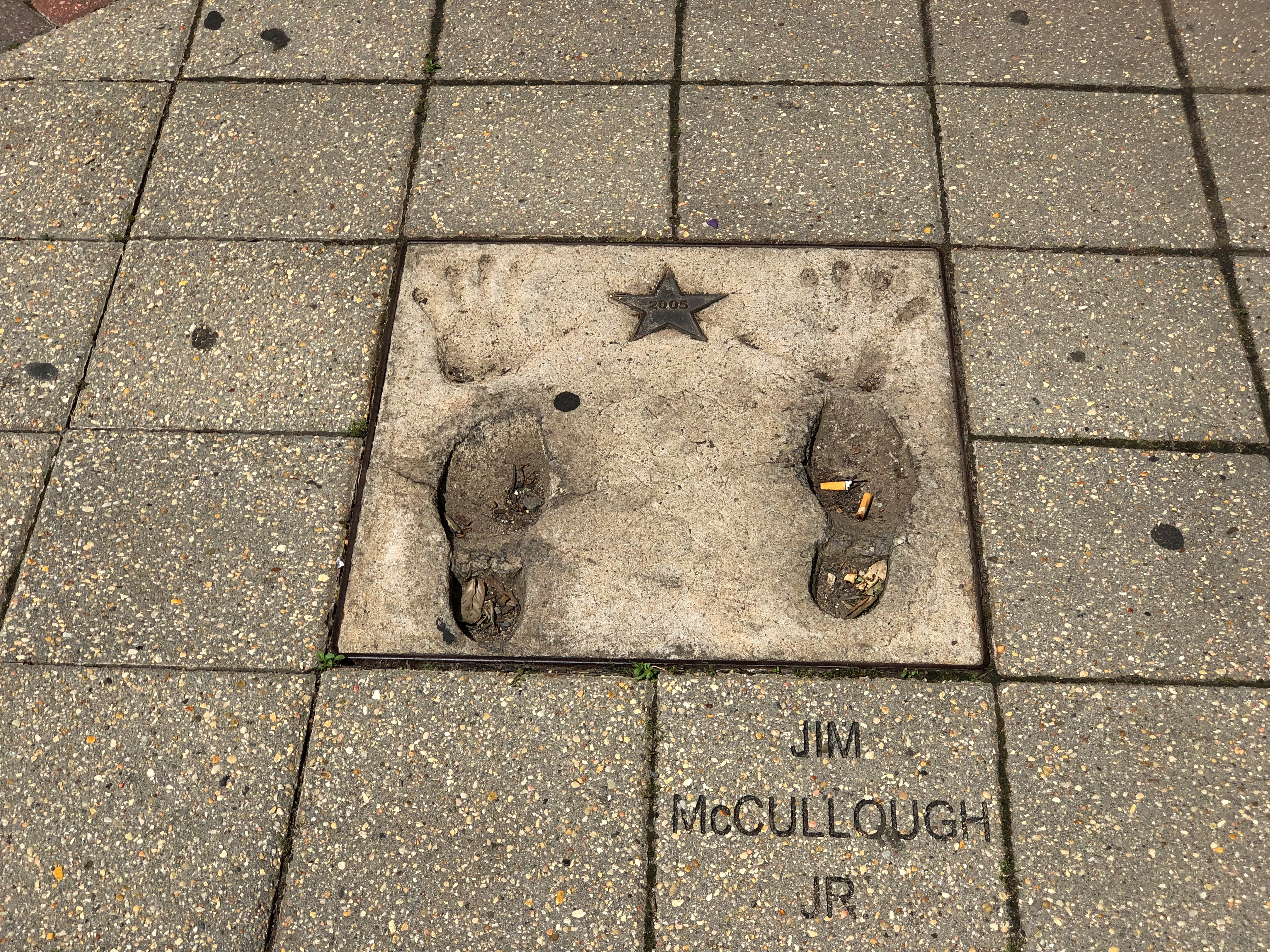

I didn’t recognize any of them. Jim McCullough Jr. (d. 2012) must be this fellow. Kix Brooks is still with us.
We had lunch – leftover pizza that had been warming in its box in the back seat that morning – at the riverfront, within sight of the Red and Bossier City across the way, and a railroad bridge.
Of course there are pelicans. Shreveport might be close to Texas, but it’s certainly Louisiana.
